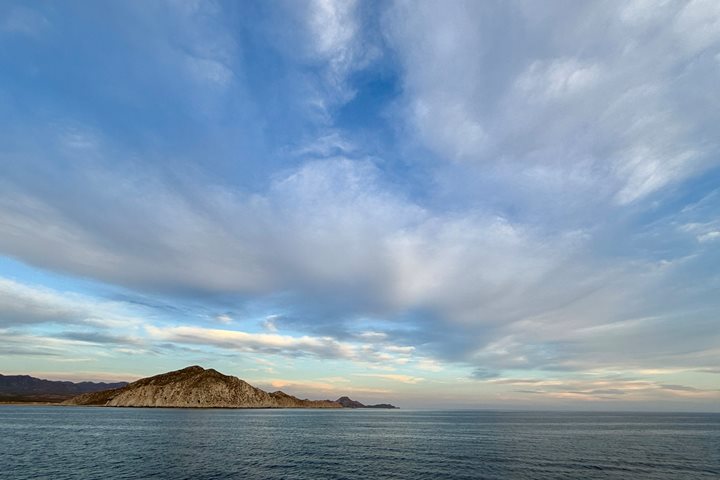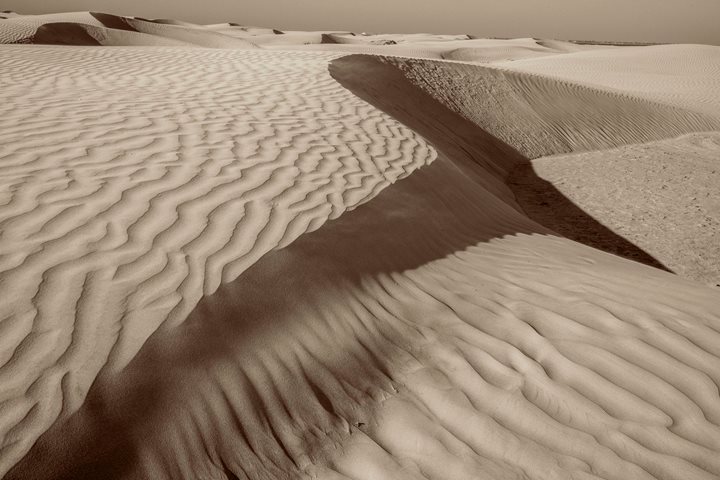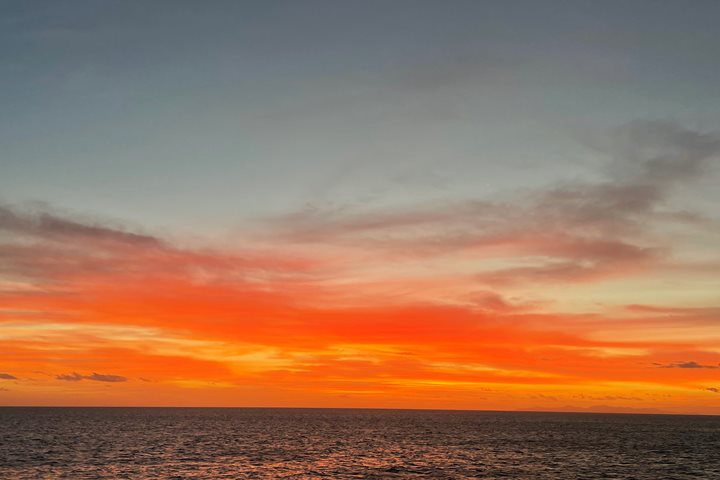Pavlov Harbor – Red Bluff Bay
Alaskan Coastal Brown Bears are normally solitary animals and avoid other bears. On the Alaskan coast, brown bears eschew normal behavior and congregate on salmon spawning streams for a short few weeks in late summer when they grudgingly tolerate each other to harvest the rich bounty of salmon fighting its way upstream to traditional spawning grounds. It is probably the rich nutritional value of salmon that allow the coastal brown bears to exceed the mountain grizzly (same species, different descriptive terminology) in size. The short river descending from Pavlov Lake drops over a modest falls where spawning salmon aggregate and bears gather to feed. Only a short hike, paddle, or Zodiac ride from our beach landing area, we ascended the stream to the falls to bears in the river chasing and catching salmon. Lots of terrific photos were created while we enjoyed observing a young female brown bear cavort up and down the stream catching one salmon after another. The show was amazing. Kayaking and Zodiac tours augmented the hiking and bear watching.
The complex, vivid, sophisticated culture of the Pacific Northwest People existed here for probably 8,000 years and thrives still today. The unique and rich art is a hallmark of traditional culture and the totem pole perhaps the most iconic symbol of the culture ubiquitous to the entire coast from Northern Washington to Prince William Sound. David Stephens, our naturalist as well as celebrated artist working in the Northwest Coast tradition, discussed and illustrated both the art and culture with personal art items and experiences. At one time, perhaps over 100,000 Native people inhabited the Pacific Northwest Coast. Today, Native Tlingit people comprise about 25% of Southeast Alaska’s population.
Late afternoon found us southbound in Chatham Strait off Baranof Island looking for whales. We found some. Researchers identify Humpback whales by distinctive patterns or coloration of the underside of their tale flukes. We soon learned Humpbacks arch their backs prior to a sounding dive when the massive tail fluke flashes so all were ready with cameras at the moment. Our Alaskan Humpbacks will soon begin the 2,000 mile migration to Hawaii where they winter. They feed neither during the migration nor their winter in Hawaii, so this late summer feeding frenzy here in rich Alaskan waters is critical. Steve detailed whale biology for us as we watched these elegant, intelligent, magnificent creatures for a few hours. The rain finally caught up with us too, not surprising as South Baranof Island frequently experiences more than 200 inches of precipitation annually.
Following dinner, we cruised into Waterfall Cove for a look at the spectacular Kasnyku Falls while kids aboard enjoyed a pizza dinner and movie.






